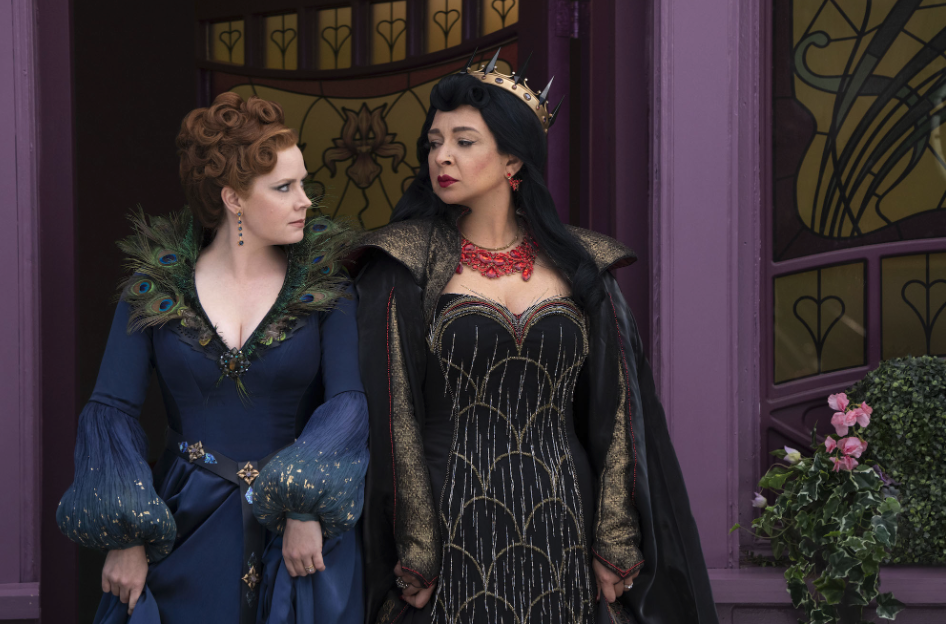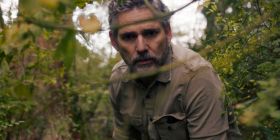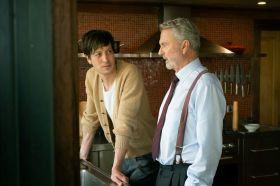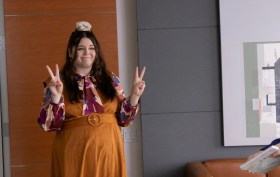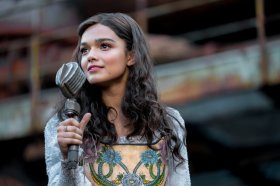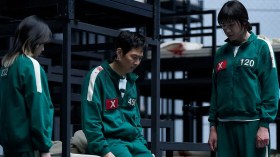The phenomenon called ‘semantic satiation’ is when you repeat a word enough times that it loses any meaning. In Disenchanted (Adam Shankman), Disney’s latest pastiche of the princess genre, true magic comes from remembering our happiest moments. But after a certain point, remembering the same things becomes a nonsensical cycle of recursion.
Disenchanted is the long-awaited sequel to Disney’s Enchanted (2007). To refresh your memory, Enchanted was a fish-out-of-water story about Giselle (Amy Adams, always phenomenal), a naïve princess from the magical kingdom of Andalasia who’s suddenly transported to New York City.
There, she falls in love with cynical lawyer Robert (Patrick Dempsey), whose young daughter Morgan (Rachel Covey) loves princess stories. Enchanted was peppered with references to Disney classics, but its real charm lay in the extravagant performances of the Andalasian characters: along with Adams, James Marsden proved himself a sublimely camp singer, while Susan Sarandon and Timothy Spall minced as the villains. Heartbreakingly few scenes were set in Andalasia, lovingly animated in the 2D-blended style of Beauty and the Beast (1991).
Charms
Disenchanted features many of the same charms, but more pitfalls: the animated sequences are still too brief, the songs less catchy, and the shout-outs less enriching. It has its charms: Adams has never given a bad performance. Maya Rudolph’s scheming Malvina is a welcome addition to the ensemble.
Stepdaughter Morgan has been recast as Gabriella Baldacchino, who delivers a standout ‘I Want’ song and nimbly shifts from sullen teenager thrown to downtrodden heroine. The costumes are lovingly detailed, the sets are memorable. There’s palpable delight from the supporting cast: Marsden only returns briefly as King Edward, but Queen Nancy (Idina Menzel) plays an expanded role. Alan Tudyk is reliably entertaining as the deliverer of exposition, but like most CGI characters in recent Hollywood, the animation is abysmal.
So what gives?
The story kicks off with Giselle, Robert, Morgan, and new daughter Sophia moving from their crowded New York to the suburbs. What initially seemed like a miniature fairy-castle in the magical woods turns out to have the worst of both worlds: cliquey neighbours, long commutes, and a fixer-upper house. Morgan has outgrown her princess phase, and Giselle struggles to connect with her.
When their conflict comes to a head, Morgan spitefully reminds Giselle that she’s not Morgan’s mother, she’s her stepmother. Distraught, Giselle uses Andalasian magic to make suburbia a whimsical world of live-action fantasy.
This is where Disenchanted accomplishes a refreshing and clever revision of Disney’s long-entrenched conventions. Giselle is no longer a princess but a stepmother, and Andalasia’s powerful narratives distort her into the archetypal wicked crone. Adams’ struggle becomes somewhat Gollum-like, but it’s compelling to see Disney reckon with its problematic history of vilifying blended families. Morgan, positioned as a Cinderella-like outcast longing for adventure, strives to save Giselle from her evil impulses. But the magic can only be wielded by a true daughter of Andalasia: no prizes for guessing who will ultimately discover that’s a metaphor.
Revising the past
Nostalgic revisions can be an excellent opportunity to deconstruct and reconfigure outdated stories, reckoning with what’s timely and what’s timeless. Disenchanted attempts this by deconstructing the wicked stepmother. It’s easy to sympathise with the characters who find themselves trapped and frustrated by the insurmountable power of Disney stories.
Enchanted thrived on a delicious clash of irony and sincerity, but irony is a delicate device. The shout-outs to past movies don’t amount to much other than an opportunity to point at the TV. Disenchanted entreats us to dwell on our happy memories of princesses past, quite literally rose-tinted in the film.
It’s encouraging that the story focuses on the relationships between women: Giselle and Morgan’s growth creates a compelling cross-generational struggle for respect. Giselle and Malvina’s rivalry is a marvellous opportunity for costume changes. Morgan and Nancy, however, have a really interesting reunion as former-almost-stepmother and stepdaughter. It takes place all too briefly in the animated sequences, which does little to convince us that the whole film wouldn’t benefit from letting the visuals be two-dimensional so the characters don’t have to be.
Idina Menzel finally gets to sing, but her signature belting is wasted on a saccharine third-act ballad. The lyrics read like they’re procedurally-generated, with a chorus of ‘Love Power’ and meaningless references to her starring role in Frozen (‘let it grow, let it glow’).
As Menzel holds the final note for 17 astonishing seconds, Disenchanted starts feeling like it’s holding onto something for the sake of holding it. The happiest place on earth implores us to embrace our happiest moments.
The film’s thesis – that we should remember how much we loved watching Enchanted – might leave you wondering why you wouldn’t simply watch Enchanted.
Disenchanted is currently streaming on Disney+.
Actors:
Director:
Format: Movie
Country:
Release:
